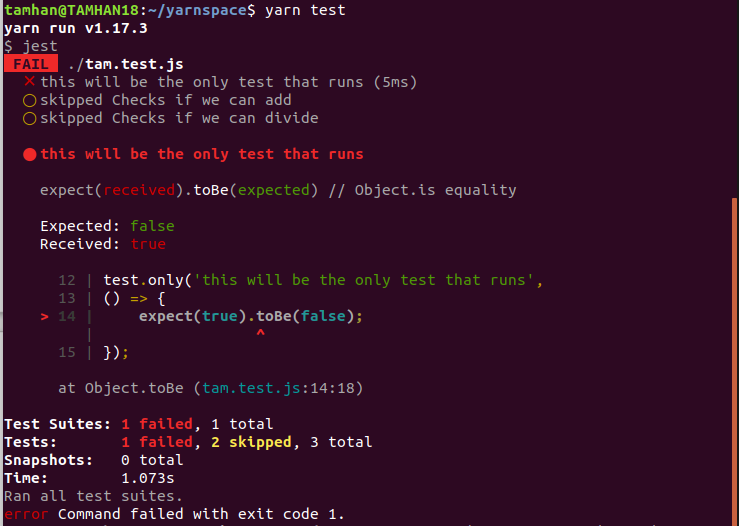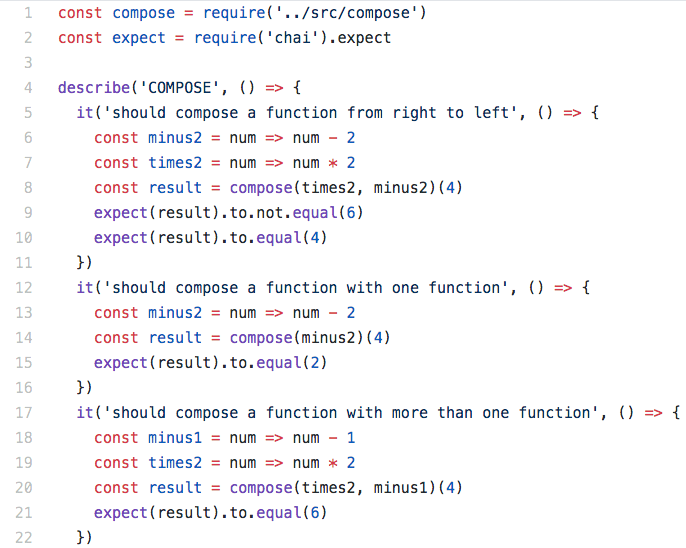In the fast-paced world of web development, writing robust, reliable, and maintainable code is paramount. At the heart of this practice lies a solid testing strategy. For years, Jest has been the go-to testing framework for countless JavaScript developers, celebrated for its “delightful” developer experience, zero-configuration setup, and powerful feature set. It has become an indispensable tool for projects built with React, Angular, Vue.js, and Node.js.
However, the JavaScript ecosystem is in a constant state of flux. New tools emerge, best practices evolve, and existing frameworks must adapt to stay relevant. This article delves into the latest Jest News, exploring recent updates, advanced techniques, and how Jest is navigating the modern landscape of web development. We’ll cover everything from its evolving core features and improved TypeScript integration to its position amidst a new wave of competitors like Vitest. Whether you’re a seasoned Jest user or just starting, this guide will provide actionable insights to elevate your testing workflow and keep you ahead of the curve.
Core Concepts Revisited: What’s New with Jest’s Fundamentals?
While Jest’s core API has remained remarkably stable, the underlying engine and features have seen significant enhancements to address modern development challenges. Staying updated on these fundamentals is key to leveraging the framework’s full potential.
The Evolution of ESM Support and Configuration
One of the most significant areas of development in recent Node.js News has been the stabilization of ECMAScript Modules (ESM). For a long time, Jest’s support for ESM was experimental and often required complex workarounds. The latest versions of Jest have made tremendous strides in providing stable, out-of-the-box ESM support. This means you can now more easily test projects that use import/export syntax natively in Node.js without relying heavily on transpilers like Babel for everything. This is crucial for developers working with modern libraries and frameworks that are increasingly ESM-first.
Enhanced Mocking and Spying Capabilities
Jest’s mocking system is one of its most powerful features. Recent updates have continued to refine it, especially around mocking ES modules. The jest.mock function is now more robust when dealing with the asynchronous nature of ESM. For instance, mocking a module that exports a named function is more straightforward than ever.
Consider a simple utility module and a test that mocks it:
// utils/api.js
export const fetchUserData = async (userId) => {
const response = await fetch(`https://api.example.com/users/${userId}`);
if (!response.ok) {
throw new Error('Failed to fetch user');
}
return response.json();
};
// __tests__/user.test.js
import { fetchUserData } from '../utils/api';
import { getUserProfile } from '../user';
// Mock the entire api module
jest.mock('../utils/api');
describe('getUserProfile', () => {
it('should return a formatted user profile', async () => {
// Provide a mock implementation for the test
fetchUserData.mockResolvedValue({
id: 1,
name: 'John Doe',
email: 'john.doe@example.com',
});
const userProfile = await getUserProfile(1);
expect(fetchUserData).toHaveBeenCalledWith(1);
expect(userProfile).toEqual({
fullName: 'John Doe',
contact: 'john.doe@example.com',
});
});
});This seamless mocking is essential for isolating tests and ensuring they run quickly and predictably, a cornerstone of effective unit testing.
Snapshot Testing in the Modern Era
Snapshot testing remains a valuable tool for preventing unintentional UI changes in component-based architectures, which is always relevant React News and Vue.js News. However, the community’s approach has matured. Instead of large, brittle component snapshots, developers are now favoring smaller, more focused snapshots or using inline snapshots (toMatchInlineSnapshot) for better readability and easier reviews within the test file itself. This prevents “snapshot drift” and ensures that snapshots remain a meaningful part of your test suite rather than a source of friction.

Deep Dive into Modern Jest Integrations
Jest’s true power lies in its vast ecosystem and its ability to integrate smoothly with other tools and frameworks. The latest developments have only strengthened these integrations, making it a versatile choice for full-stack development.
Jest and TypeScript: A Seamless Experience
The synergy between Jest and TypeScript is stronger than ever. While ts-jest remains a popular choice for transforming TypeScript files, Jest’s native support via Babel is often sufficient and faster for many projects. The latest TypeScript News emphasizes type safety, and using Jest with TypeScript allows you to write tests that are not only functionally correct but also type-safe.
Setting up a project with TypeScript and Jest is straightforward. Your configuration might look something like this:
// jest.config.js
/** @type {import('ts-jest').JestConfigWithTsJest} */
module.exports = {
preset: 'ts-jest',
testEnvironment: 'node',
roots: ['<rootDir>/src'],
transform: {
'^.+\\.tsx?$': 'ts-jest',
},
moduleNameMapper: {
'^@/(.*)$': '<rootDir>/src/$1',
},
};
// src/math.ts
export const add = (a: number, b: number): number => a + b;
// src/__tests__/math.test.ts
import { add } from '../math';
describe('add', () => {
it('should add two numbers correctly', () => {
expect(add(2, 3)).toBe(5);
});
});This setup provides a fantastic developer experience with autocompletion and type-checking in your test files, catching potential errors before you even run the tests.
Testing Modern Frontend Frameworks
Jest remains the de facto standard for testing components in many frontend frameworks. The community-driven Testing Library family of packages provides the best-in-class tools for this.
- React/Next.js: With
@testing-library/react, you can write tests that interact with your components as a user would, ensuring accessibility and robust functionality. This is a constant theme in Next.js News and React News. - Vue/Nuxt.js:
@testing-library/vueoffers the same user-centric philosophy for the Vue ecosystem, aligning with the latest trends in Vue.js News and Nuxt.js News. - Svelte/Angular: Similar libraries exist for other major frameworks like Svelte and Angular, making Jest a versatile choice regardless of your stack. Whether it’s Svelte News or Angular News, component testing principles remain consistent.
Here’s a practical example of testing a React component:
// components/Counter.js
import React, { useState } from 'react';
export function Counter() {
const [count, setCount] = useState(0);
return (
<div>
<p>Count: {count}</p>
<button onClick={() => setCount(count + 1)}>Increment</button>
</div>
);
}
// __tests__/Counter.test.js
import React from 'react';
import { render, screen, fireEvent } from '@testing-library/react';
import '@testing-library/jest-dom';
import { Counter } from '../components/Counter';
describe('Counter', () => {
it('should render initial count and increment on button click', () => {
render(<Counter />);
// Assert initial state
expect(screen.getByText('Count: 0')).toBeInTheDocument();
// Act: click the button
const incrementButton = screen.getByRole('button', { name: /increment/i });
fireEvent.click(incrementButton);
// Assert the new state
expect(screen.getByText('Count: 1')).toBeInTheDocument();
});
});Beyond the Frontend: Jest for Node.js Backends
Jest is not just for the frontend. Its capabilities extend fully to testing Node.js backend applications. Whether you are using Express.js, Koa, Fastify, or a full-fledged framework like NestJS or AdonisJS, Jest can be used to write unit and integration tests for your APIs, services, and database logic. Tools like supertest integrate perfectly with Jest to make HTTP requests to your running application and assert on the responses, making API integration testing a breeze.
Advanced Techniques and the Competitive Landscape
As you become more proficient with Jest, you’ll encounter more complex scenarios. At the same time, it’s crucial to be aware of the broader testing landscape, which has seen some exciting new entrants.

Asynchronous Testing Perfected
Modern applications are inherently asynchronous. Jest provides excellent support for this with async/await, but advanced scenarios often require more control. Jest’s timer mocks are incredibly useful for testing code that relies on setTimeout, setInterval, or other time-based functions without making your tests slow and flaky.
// timerModule.js
export function delayedCallback(callback) {
setTimeout(() => {
callback('Hello, world!');
}, 1000);
}
// __tests__/timerModule.test.js
import { delayedCallback } from '../timerModule';
// Use fake timers
jest.useFakeTimers();
describe('delayedCallback', () => {
it('should call the callback after 1 second', () => {
const mockCallback = jest.fn();
delayedCallback(mockCallback);
// At this point, the callback has not been called
expect(mockCallback).not.toHaveBeenCalled();
// Fast-forward time by 1000ms
jest.advanceTimersByTime(1000);
// Now the callback should have been called
expect(mockCallback).toHaveBeenCalledWith('Hello, world!');
expect(mockCallback).toHaveBeenCalledTimes(1);
});
});The Rise of Vitest: A Challenger to Jest’s Throne?
Perhaps the biggest story in recent testing news is the meteoric rise of Vitest. Built on top of Vite, Vitest offers a Jest-compatible API but with significantly better performance, especially in projects already using Vite. The latest Vite News often highlights this synergy. For many, the main draws of Vitest are its incredible speed, native TypeScript/ESM support, and a modern, fast watch mode. While Jest is adapting, the performance gains from Vitest are compelling. The good news is that its Jest-compatible API makes migration relatively painless, allowing teams to experiment without a complete rewrite. This competition is healthy, pushing the Jest team to innovate and improve performance, which benefits the entire community.
E2E Testing: Where Jest Meets Cypress and Playwright
It’s important to understand the different layers of the testing pyramid. Jest excels at the unit and integration testing layers. For end-to-end (E2E) testing, which simulates a full user journey in a browser, dedicated tools like Cypress and Playwright are the industry standard. The latest Cypress News and Playwright News showcase their powerful features for browser automation. The best strategy involves using Jest for your component and logic tests and complementing it with a suite of E2E tests written in Cypress or Playwright to ensure all parts of your application work together correctly in a real browser environment.
Best Practices and Performance Optimization
Writing tests is one thing; writing good, fast, and maintainable tests is another. Following established best practices can dramatically improve the quality of your test suite and your team’s productivity.

Writing Clean and Maintainable Tests
Adhere to the Arrange-Act-Assert (AAA) pattern to structure your tests clearly. Keep tests focused on a single piece of functionality and use descriptive names. Leverage tools from the broader ecosystem, like the latest updates from ESLint News for static analysis with plugins like eslint-plugin-jest, and Prettier News for consistent code formatting. This ensures your test suite remains a reliable asset rather than a technical debt liability.
Optimizing Jest Performance
As a test suite grows, performance can become an issue. Here are some tips to keep your Jest tests running fast:
- Run tests in parallel: Jest does this by default, but you can configure the number of worker threads with the
--maxWorkersflag. - Use the cache: Jest intelligently caches transformed file results to avoid redundant work. Ensure your CI environment is configured to leverage this cache.
- Isolate tests: Avoid tests that depend on the state of other tests. Use
beforeEachandafterEachhooks to reset state, mocks, and spies. - Update your tools: Performance improvements are constantly being made not just in Jest but also in its dependencies. Keep an eye on Babel News and SWC News, as faster transpilation directly translates to faster test runs.
Conclusion
Jest remains a formidable force in the JavaScript testing landscape. Its mature feature set, extensive ecosystem, and strong community support make it a reliable choice for projects of any scale. The latest Jest News shows a clear focus on adapting to the modern web, with significant improvements in ESM support, TypeScript integration, and ongoing performance optimizations.
While new challengers like Vitest are pushing the boundaries of speed and developer experience, this healthy competition ultimately benefits everyone. By understanding Jest’s latest features, integrating it with modern tools like Testing Library, and following best practices for writing clean and performant tests, you can build a robust testing strategy that instills confidence and accelerates your development cycle. The future of JavaScript testing is bright, and Jest continues to be a central part of that story.

